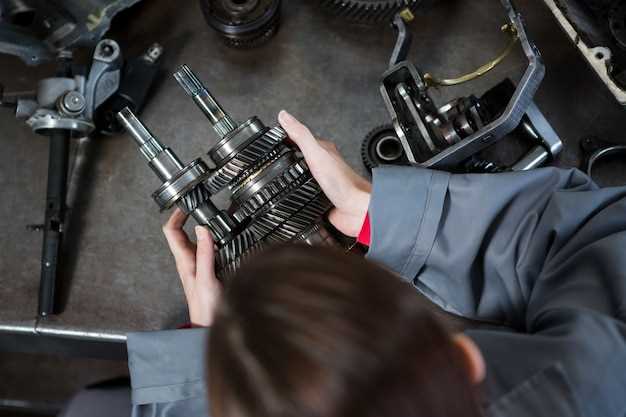

Owning a Ford Mustang is more than just a driving experience; it’s a commitment to ensuring your muscle car performs at its best on the road. Regular maintenance is essential to keeping your Mustang in prime condition, and understanding the key areas to focus on can make all the difference. One crucial aspect of this upkeep is the oil change, which plays a pivotal role in the overall health of your engine.
Frequent oil changes are vital for maintaining engine efficiency and longevity. Engine oil lubricates and cools various components, reducing friction and preventing wear. Over time, oil breaks down and becomes less effective, leading to potential engine problems if not addressed promptly. Therefore, adhering to the recommended oil change intervals is critical for ensuring your Mustang runs smoothly.
Beyond just oil changes, regular maintenance checks should include other essential components like filters, brakes, and tire pressure. Staying proactive in these areas will help you avoid unexpected issues and costly repairs, allowing you to enjoy the full potential of your Mustang while ensuring its performance remains consistent and thrilling.
How to Properly Execute a Tune-Up for Your Mustang
A proper tune-up is essential for maintaining the performance and longevity of your Mustang. One of the most critical aspects of this process is ensuring that your vehicle’s engine runs smoothly and efficiently. Here’s a step-by-step guide to executing a tune-up effectively.
1. Gather Necessary Tools and Parts
Before starting, gather all required tools including a socket set, screwdrivers, spark plug socket, and pliers. You will also need replacement parts such as spark plugs, air filter, fuel filter, and motor oil for the oil change.
2. Change the Engine Oil
Begin your tune-up by performing an oil change. Warm up the engine for a few minutes to thin the oil, making it easier to drain. Turn off the engine, then place an oil pan under the oil pan and remove the drain plug. Allow the oil to fully drain before replacing the drain plug and filling the engine with fresh oil. Ensure you use the proper oil type recommended for your Mustang.
3. Replace Spark Plugs
Next, remove the old spark plugs using the spark plug socket. Inspect them for wear and deposits. Install new spark plugs, making sure to torque them to the manufacturer’s specifications. Properly gapping the plugs can significantly improve ignition efficiency.
4. Change the Air Filter
The air filter should be checked and replaced if dirty. This step is vital for maintaining optimal airflow to the engine. A clean air filter helps improve fuel efficiency and performance.
5. Replace the Fuel Filter
A clogged fuel filter can restrict fuel flow and affect performance. Locate the fuel filter, disconnect the fuel lines, and replace it according to the manufacturer’s instructions.
6. Inspect Belts and Hoses
While performing your tune-up, inspect all belts and hoses for signs of wear or damage. Replace any that appear frayed or cracked to prevent breakdowns.
7. Check Battery and Electrical Systems
Ensure the battery terminals are clean and tightly connected. Inspect the condition of the battery and charging system to avoid electrical issues.
8. Final Checks
Once all components have been replaced or inspected, start the engine and listen for any unusual noises. Check for leaks around the oil and fuel systems. A successful tune-up will result in a smooth-running Mustang ready for the road.
Steps for a Reliable Oil Change in Your Mustang

Changing the oil in your Mustang is essential for maintaining its performance and longevity. Follow these steps for a smooth and reliable oil change.
1. Gather Necessary Supplies: Before starting, collect all the tools and materials you need. This includes the correct type of oil, a new oil filter, an oil catch pan, an oil wrench, a funnel, and a socket wrench. Refer to your owner’s manual for the specific oil type and capacity.
2. Prepare Your Vehicle: Park your Mustang on a level surface and engage the parking brake. Allow the engine to cool down for at least 30 minutes to avoid burns. If available, elevate the car using jack stands or ramps for easier access to the oil pan.
3. Drain the Old Oil: Place the oil catch pan under the oil pan. Using the socket wrench, loosen and remove the oil drain plug. Let the old oil completely drain into the catch pan. This may take several minutes. Once drained, replace the drain plug and tighten it securely.
4. Replace the Oil Filter: Locate the oil filter, usually found on the side or bottom of the engine. Use the oil wrench to loosen and remove the old filter. Before installing the new filter, apply a small amount of new oil to the rubber gasket of the new filter. This helps create a better seal. Install the new filter by hand, ensuring it’s snug but not overly tight.
5. Add New Oil: Open the hood and remove the oil filler cap. Using a funnel, pour the new oil into the engine. Check the owner’s manual for the correct amount. After adding oil, let it settle for a minute and check the dipstick for proper levels.
6. Run the Engine: Start your Mustang and let it idle for a few minutes. This allows the new oil to circulate throughout the engine and the filter. Check for leaks around the oil filter and drain plug. If everything looks good, turn off the engine and wait for a few minutes to recheck the oil level using the dipstick.
7. Dispose of Old Oil Properly: Collect the old oil from the catch pan and take it to a recycling facility or an auto shop that accepts used oil. Do not dispose of it in the trash or drain.
Performing regular oil changes as part of your maintenance routine not only ensures optimal performance but also enhances the lifespan of your Mustang. Regular tune-ups alongside oil changes will keep your vehicle running smoothly for years to come.
Common Maintenance Checks to Ensure Peak Performance

Regular maintenance is crucial for keeping your Mustang in top shape. Here are some essential checks you should perform to ensure its peak performance.
First and foremost, check the engine oil regularly. Keeping the oil level within the recommended range not only lubricates the engine components but also helps maintain optimal operating temperatures. Schedule an oil change based on your driving habits and the manufacturer’s recommendations, typically every 5,000 to 7,500 miles.
Next, inspect the air filter. A clean air filter enhances engine efficiency by allowing better airflow and improving fuel economy. Replace it as needed, especially if you frequently drive in dusty conditions or city traffic.
Coolant levels also play a vital role in maintaining engine performance. Check the coolant reservoir and ensure it is filled to the appropriate level. Regularly replacing the coolant according to your vehicle’s maintenance schedule prevents overheating and protects engine components.
Tire maintenance is another critical aspect. Check tire pressure monthly and ensure it matches the recommended specifications. Regularly inspecting tread depth and alignment will help enhance both performance and safety while driving.
Lastly, don’t neglect the brakes. Inspect brake pads and rotors for wear and replace them if they show signs of damage or reduced performance. Proper braking is essential for overall driving safety and control.
By adhering to these common maintenance checks, you’ll ensure that your Mustang performs at its best and remains a joy to drive for years to come.






